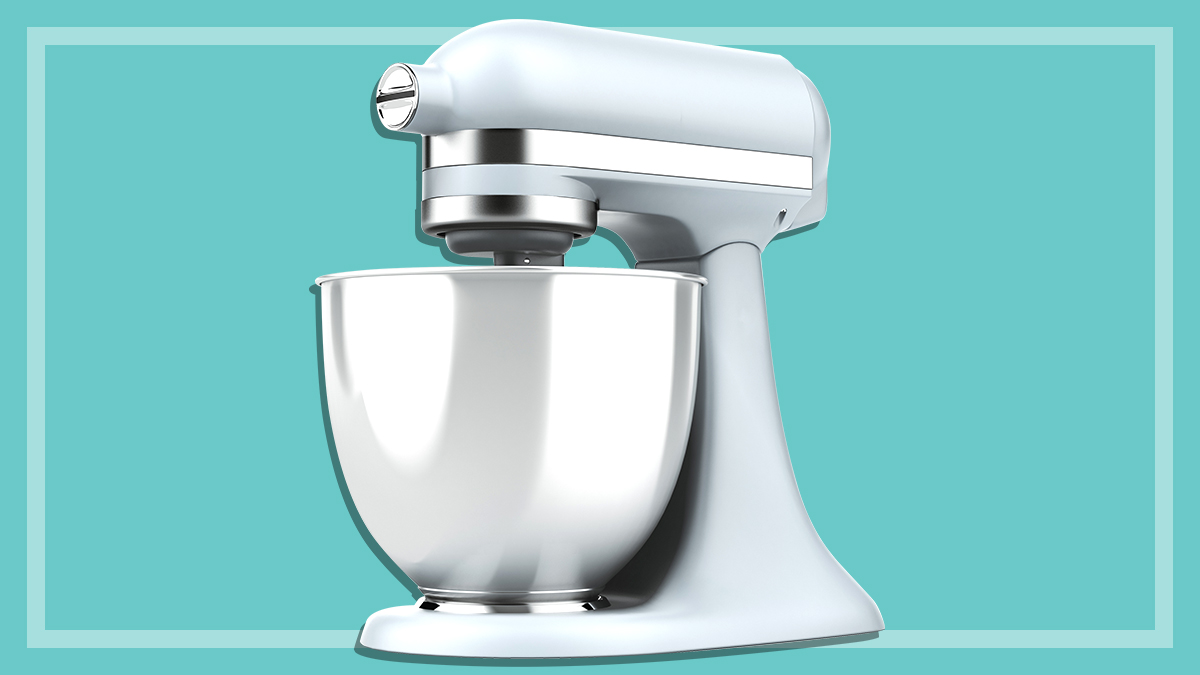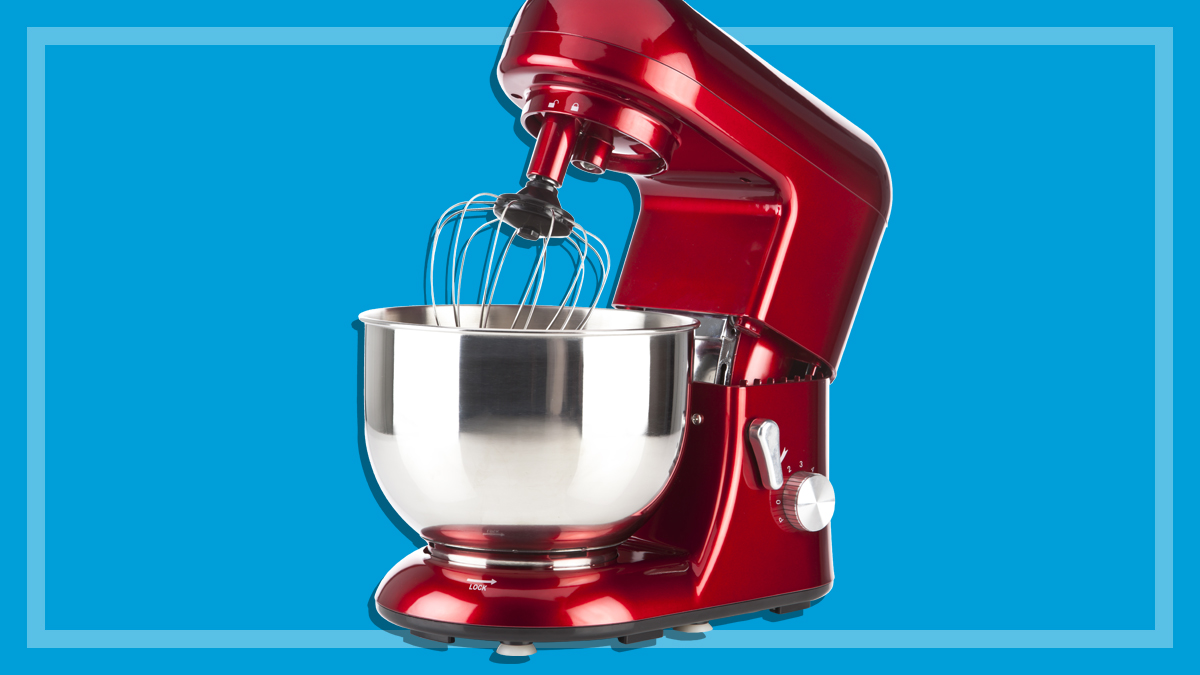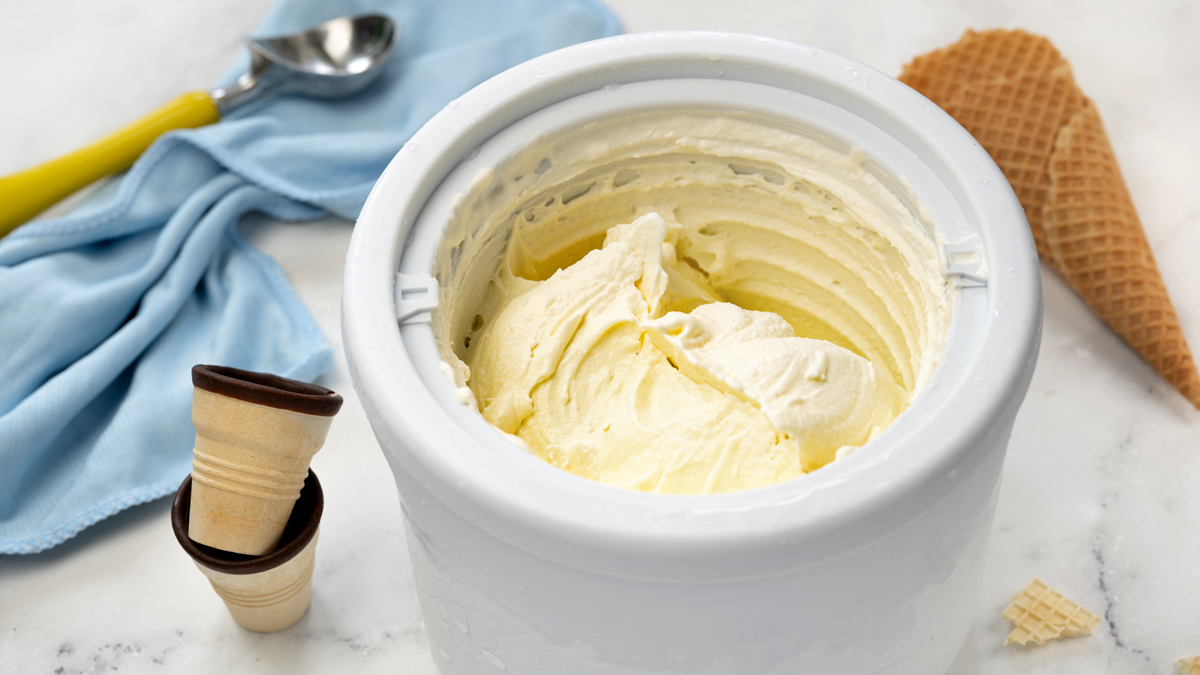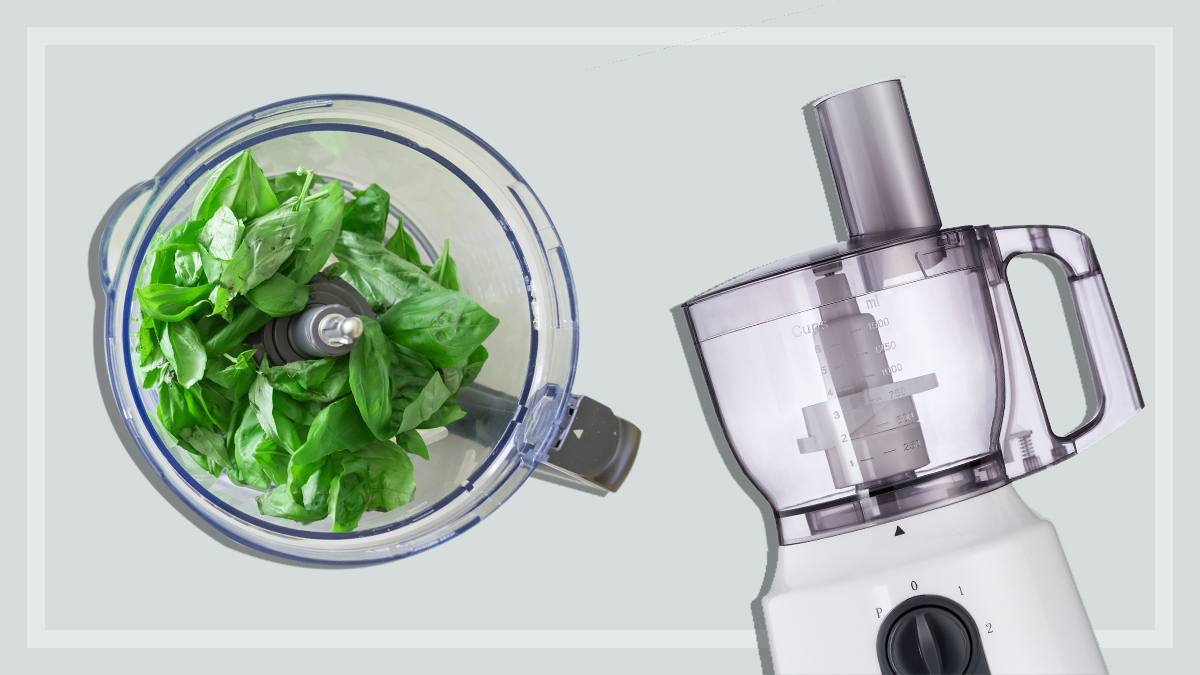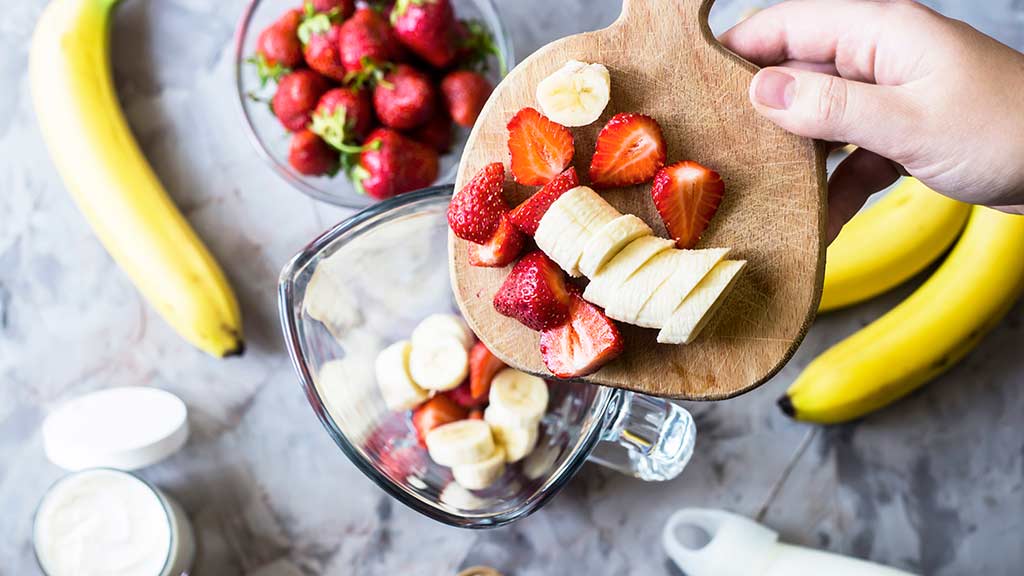Get our independent lab tests, expert reviews and honest advice.
Is a KitchenAid mixer worth it?

KitchenAid is synonymous with mixers. If you’re a keen baker and have ever considered buying a stand mixer, a KitchenAid model has probably made it onto your wishlist. They’ve got the looks, sitting proud on any kitchen bench, and are available in a range of colours to suit any kitchen design.
On this page:
- What can a KitchenAid mixer do?
- Pros and cons of KitchenAid mixers
- KitchenAid attachments
- Which KitchenAid mixer should you buy?
- Is there a cheaper alternative to a KitchenAid mixer?
- KitchenAid mixers: Our verdict
But they’re also among the more expensive mixers on the market – the models we’ve tested range in price from $699 right up to $1149.
In comparison, mixers from rival brands can cost as little as $75, and you can even pick up one of our recommended models for under $400.
So is a KitchenAid mixer really worth it? What do you get for the premium price tag? And are there other brands worth looking at?
Do you really need a stand mixer?
You may have heard good things about them, but is a stand mixer right for you? If you’re an occasional baker, a hand mixer that’s compact and easy to use might be all you need.
But if baking is your thing and you’re regularly serving up cakes, pastries and doughs in your household, then a stand mixer will be a handy companion.
Consider the quantity you usually make as some mixers have very large mixing bowls, which makes mixing or whisking small quantities awkward and in some cases not possible.
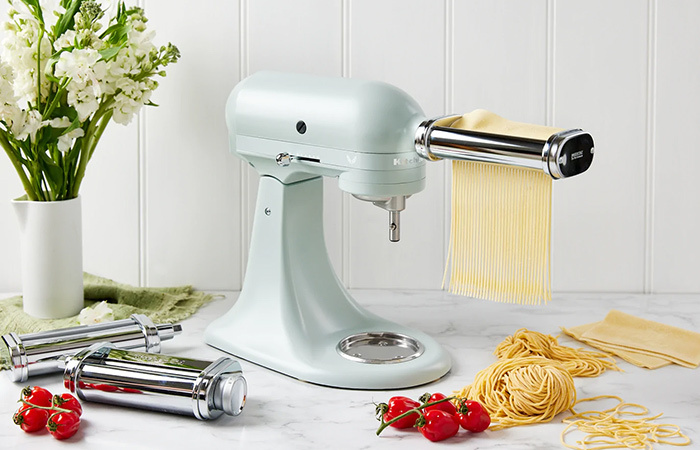
What can a KitchenAid mixer do?
Like all mixer brands, KitchenAid mixers have three main functions: whisk, mix and knead. A mixer takes away the grunt work of having to knead a mixture, whisk egg whites or mix a cake batter by hand, and their large mixing bowl capacity means you can bake in bulk with ease.
What sets a KitchenAid mixer apart from other brands of mixer isn’t functionality, but rather aesthetics. KitchenAid mixers stand out from the crowd with a distinctive look that any keen baker will be able to recognise. There’s also a lot you can do to personalise your mixer, including getting a message or name engraved onto some models for a special touch.
You can also buy an extra mixing bowl in a different design and add additional attachments (like a pasta maker or food grinder) to increase the mixer’s functionality and versatility, and there are other KitchenAid appliances like toasters, kettles and food processors that you can buy to complement your mixer and match the look.
Mixing bowl sizes
The KitchenAid mixers we’ve tested come with mixing bowls ranging from 4.7L to 6.6L.
A 4.7L mixing bowl is a perfect size for the home baker as it can mix as little as a two egg white meringue, but also accomodate as much as a large 20–23cm cake batter or enough cooking dough for a week’s supply of cookies as well as 1kg of pizza dough.
A 5.6–6.6L mixing bowl is suitable for a larger family or for a budding commercial baker.
KitchenAid also has models with bowl sizes up to 7.6L which are best for the commercial baker, cooking on a larger scale.
Keep in mind, the larger the bowl capacity the more ingredients you’ll need to be using to get the best results. The larger capacity may not accommodate smaller amounts so it’s important to consider the quantity of what you’ll be baking when you decide which mixer to go for.
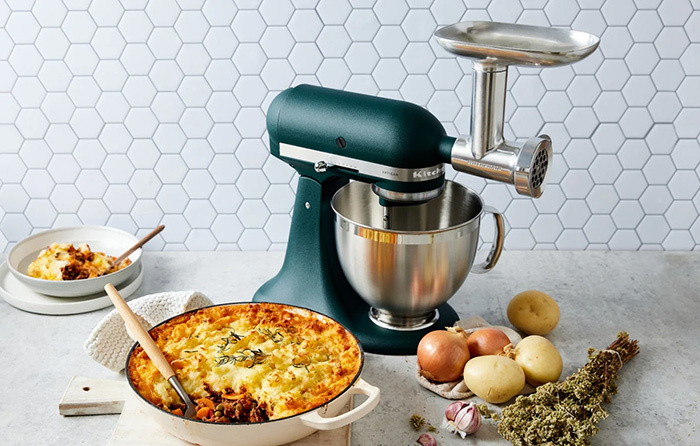
Pros and cons of KitchenAid mixers
Pros
- Sturdy construction.
- Excellent performers.
- Five-year motor warranty (not including accessories).
- Available in a variety of colours and can be personalised to suit your taste.
- Many optional accessories and attachments are available to increase their versatility.
- Beater height is easily adjustable using a flat head screwdriver – this ensures effective mixing and prevents wear and tear on the mixer and the bowl.
Cons
- Relatively expensive.
- Optional accessories and attachments are also relatively expensive.
- Heavy motor head is not spring loaded, so can be heavy to lift and lower.
- Generally only OK for ease of use.
- Most accessories only have a one-year warranty.
KitchenAid attachments
All KitchenAid mixers have an outlet at the front of the unit for attaching KitchenAid accessories that can be bought separately.
These optional extras can give your mixer more versatility, meaning you won’t need to buy each dedicated appliance separately.
The attachments are universal and can be used on any KitchenAid stand mixer.
Along with various mixing tools, pouring shields and mixing bowls that can be bought separately, you can buy the following attachments for KitchenAid mixers:
- 3-piece Pasta Roller and Cutter KSMPRA ($299)
- Metal Food Grinder 5KSMMGAA ($229)
- Fresh Prep Slicer & Shredder 5KSMVSA ($179)
- Sifter + Scale KSMSFTAA ($259)
- Pasta Roller KSMPSA ($159)
- Citrus Juicer with Strainer JE ($59)
- Gourmet Pasta Press KSMPEXTA ($399)
- 7 Blade Spiraliser Plus with Peel, Core & Slice KSM2APC ($249)
- Sausage Stuffer Attachment Kit without Food Grinder SSAA ($19)
- Food Grinder 5KSMFGAA ($129)
- Food Processor KSM2FPA ($399)
- Grain Mill KGM ($229)
- Pasta Cutter and Angel KSMPCA ($199)
- Ice Shaver 5KSMSIA ($179)
- Vegetable Sheet Cutter KSMSCA ($239)
- Ice Cream Bowl 5KSMICM ($209).
Keep in mind that many of these attachments will add a significant amount to the cost of an already expensive mixer, and you’ll need to make sure you have the storage space to accommodate the extra accessories too.
Which KitchenAid mixer should you buy?
Our expert testers, Fiona Mair and Chantelle Dart, are avid bakers and know how to put mixers through their paces in the CHOICE kitchen lab. They whisk egg whites and make pizza dough and cake batters to test the three main mixing tools.
They also know the importance of having a mixer that’s easy to use, so they assess the controls, using the locking mechanism and inserting and removing the mixing tools, and check whether you can lift and lower the head and remove and replace the mixing bowl with ease.
If your heart is set on a KitchenAid, we’ve tested five models and found that they all perform well, with a couple of models scoring highly enough to be recommended. But performance is only part of the equation – to see how the KitchenAid models stack up overall against other models from Breville, Kenwood, Sunbeam and more, take a look at our full stand mixers review.
The KitchenAid models we’ve tested are very similar in terms of features and functionality. All have 10 speeds (except for the Bowl-Lift that has 11 speeds) and come with a five-year warranty (not including the accessories).
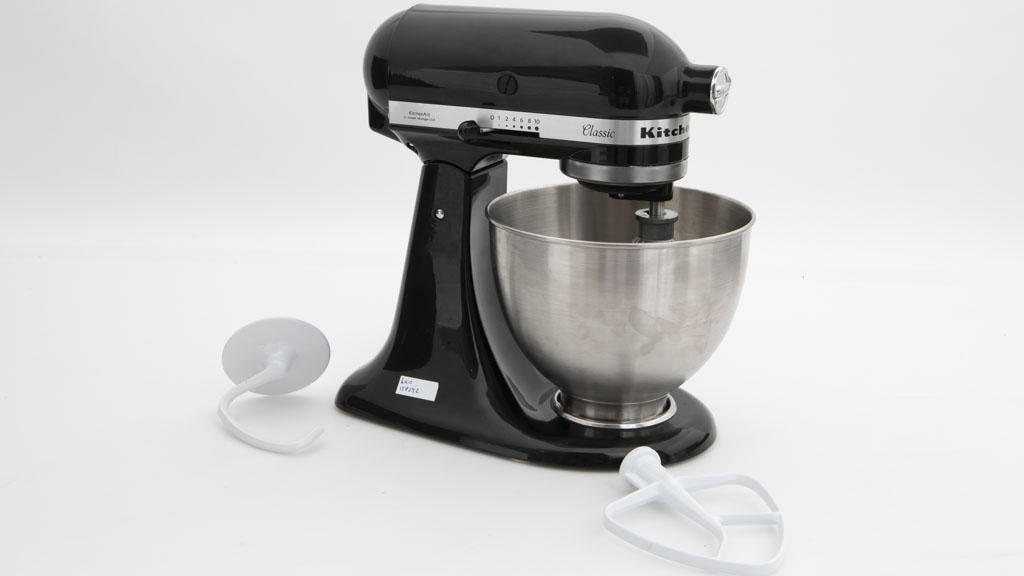
KitchenAid Classic Stand Mixer 5KSM45
- Performance score: 90%
- Mixing bowl size: 4.3L
- Price: $699
If you’re just after a KitchenAid mixer with the basics, this model is a good starting point. It comes with one 4.3L mixing bowl and the standard whisk, flat beater and dough hook accessories.
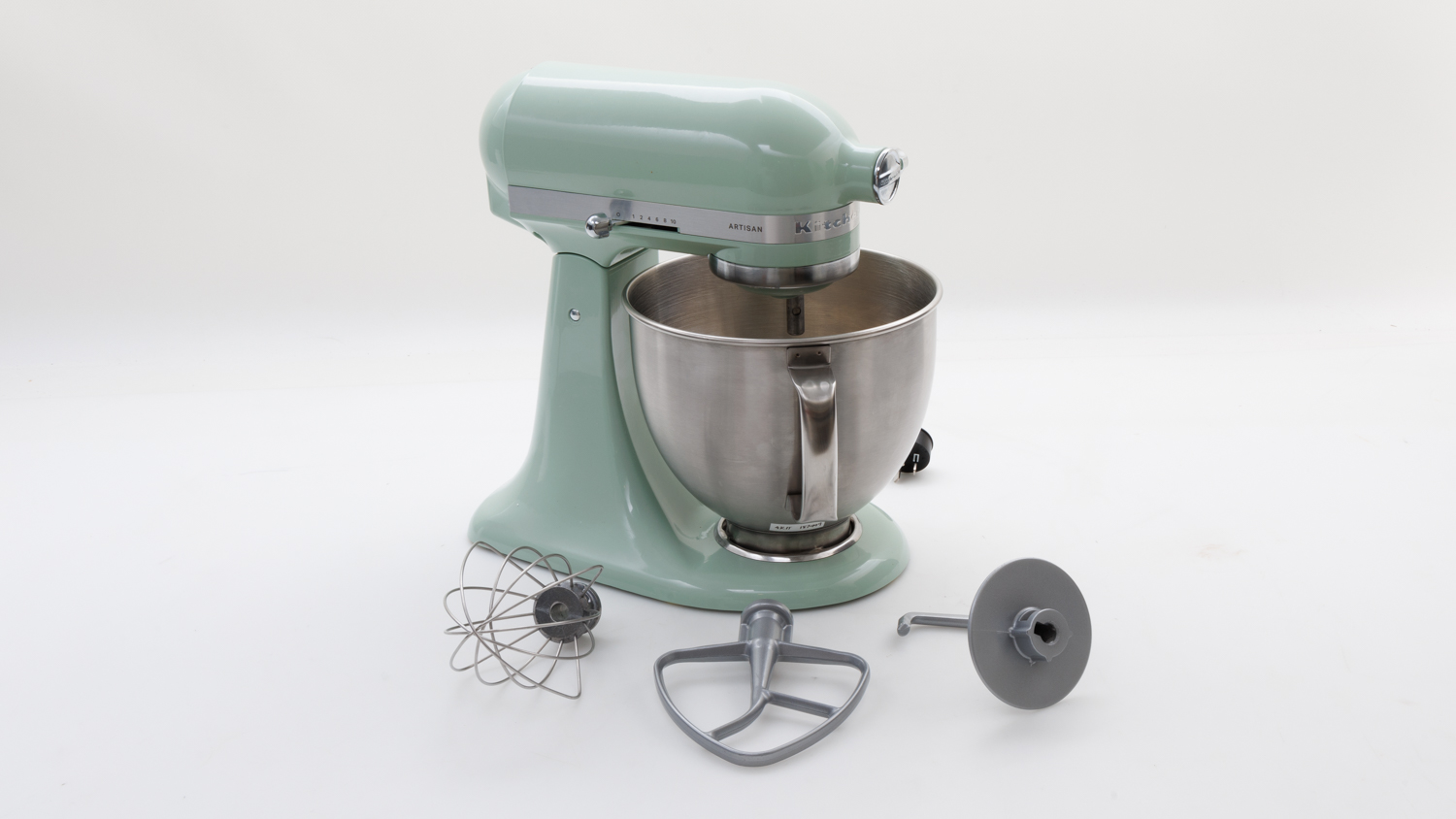
KitchenAid Artisan Tilt-Head Stand Mixer 5KSM192XDAPT
- Performance score: 97%
- Mixing bowl size: 4.7L
- Price: $799
Moving up from the Classic, this slightly more expensive model comes with the same accessories, but a slightly bigger 4.7L mixing bowl with a handle. It was near perfect in our performance tests and our tester Chantelle says, “this mixer is good for professional bakers and for baking in large quantities”.
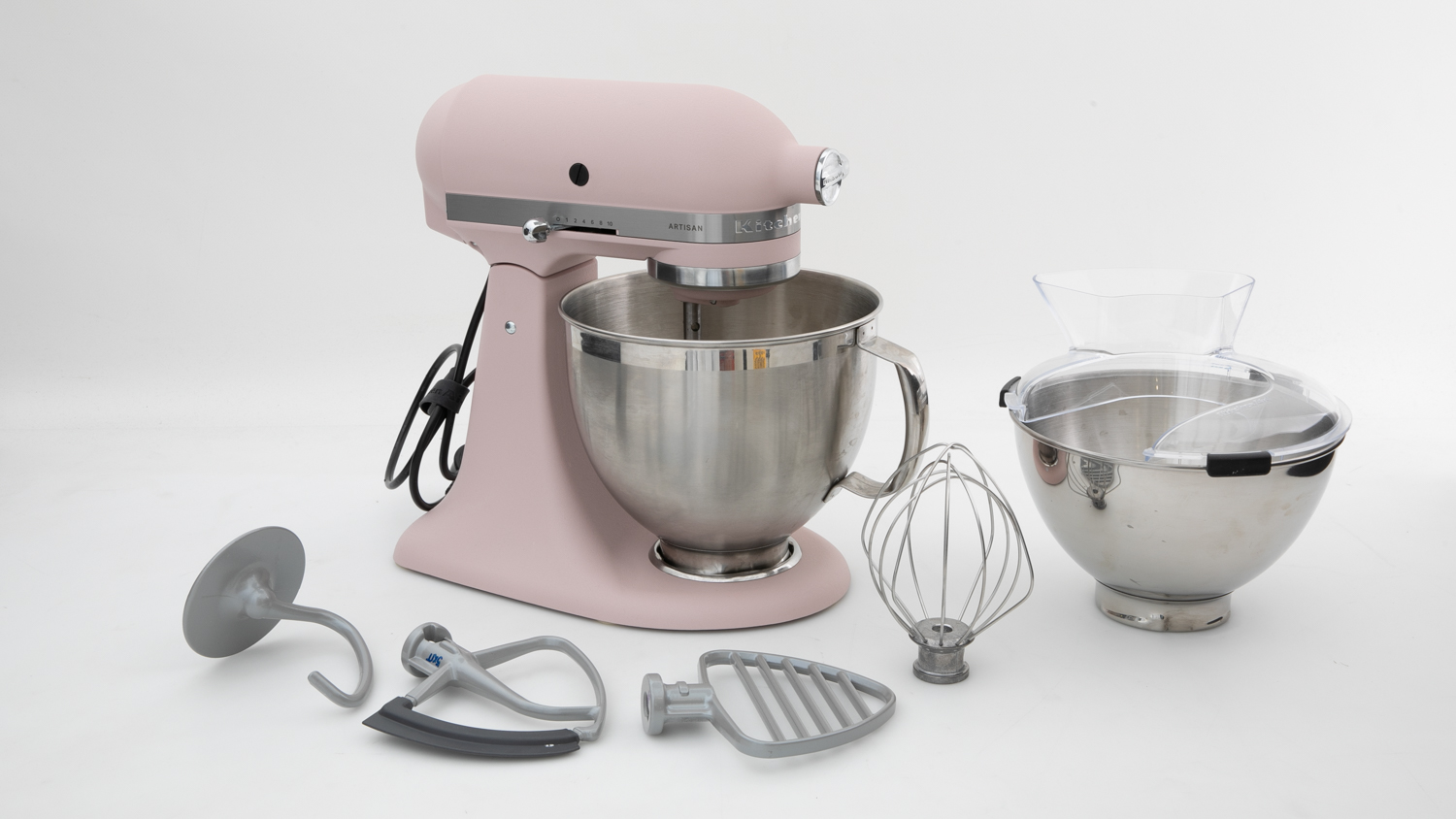
KitchenAid Artisan Stand Mixer 5KSM195PSAFT
- Performance score: 90%
- Mixing bowl size: 2.8L and 4.7L
- Price: $949
If you like to bake in small and large quantities, this KitchenAid model comes with both a 2.8L and a 4.7L mixing bowl. The 2.8L bowl has no handle but is lighter – perfect for mixing a small amount of ingredients, for example a buttercream or cream cheese icing or for whipping a small amount of cream or a single egg white.
As well as the standard whisk and dough hook, it also comes with a scraper beater (KitchenAid refers to it as a Flex Edge beater) and a pastry beater as well as a convenient pouring shield/splash guard.
For our home economist, Fiona Mair, a scraper beater is a must-have. “It’s a really handy accessory as it scrapes the inside of the mixing bowl for you, meaning you don’t have to stop mixing to scrape the bowl yourself.”
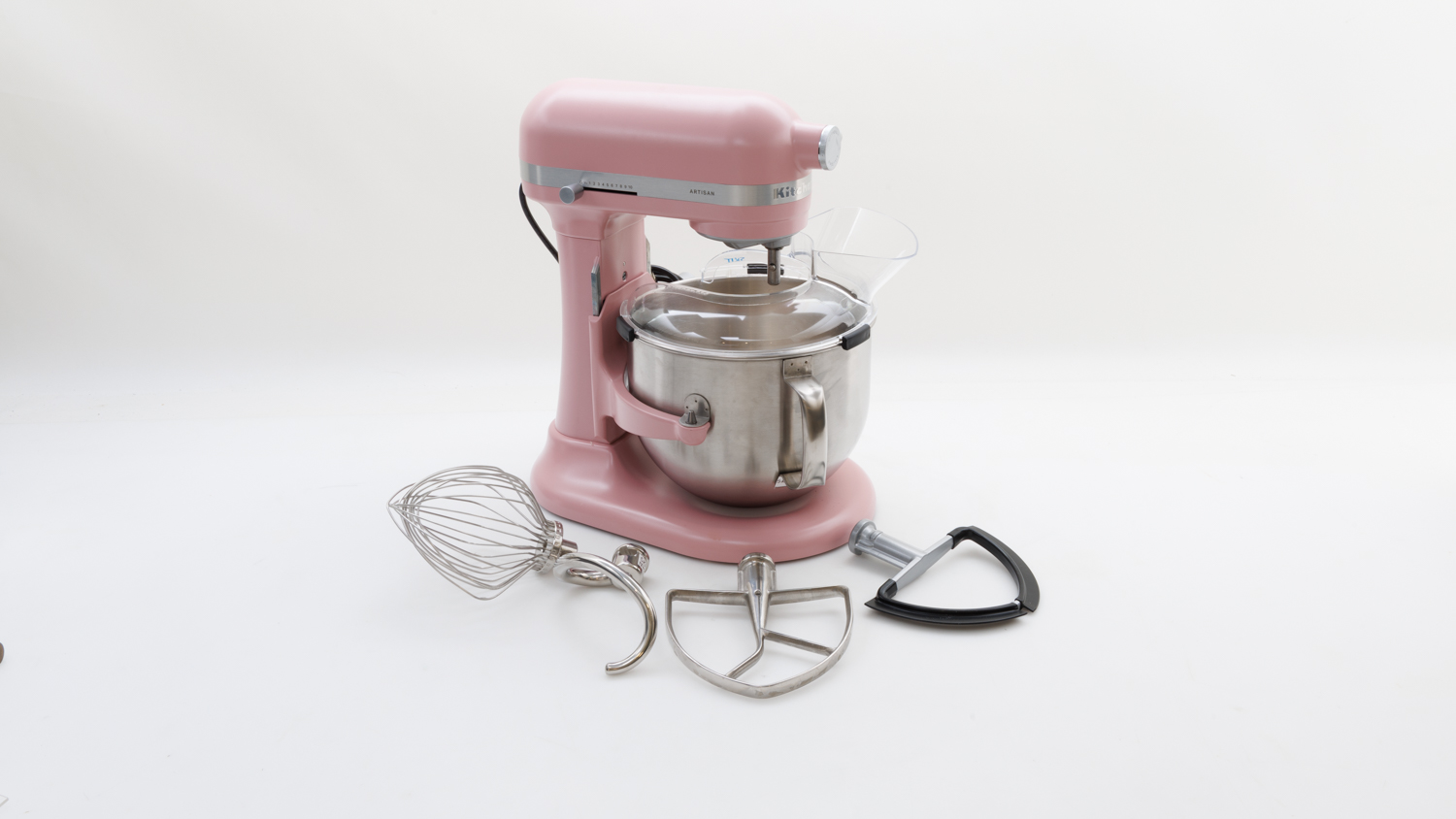
KitchenAid Bowl-Lift Stand Mixer 5KSM70SHXADR
- Performance score: 97%
- Mixing bowl size: 6.6L
- Price: $1099
If you bake often and in large quantities, the KitchenAid Bowl-Lift comes with a large 6.6L mixing bowl that’s perfect for bulk baking. While the large bowl is handy, it’s worth noting that it’s also heavier to hold and scrape out batters and mixtures.
It comes with a whisk, scraper beater, flat beater, dough hook and pouring shield as accessories. What sets it apart from the other KitchenAid models is its bowl lift feature, which allows you to lift or lower the mixing bowl by using a large handle at the side of the mixer. Bear in mind this model is one of KitchenAid’s priciest offerings.
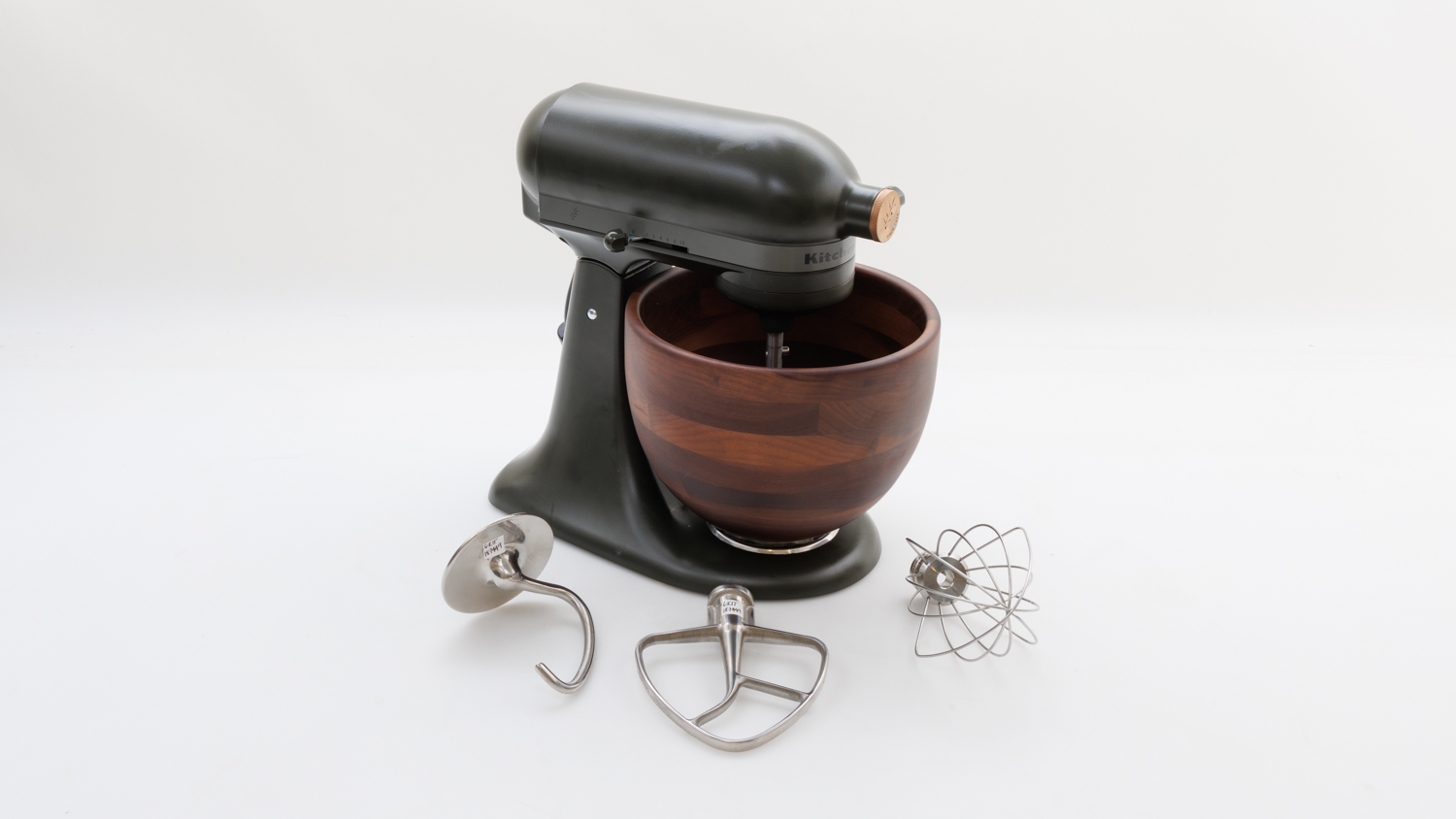
KitchenAid Evergreen Tilt-Head Stand Mixer 5KSM180WSAEG
- Performance score: 97%
- Mixing bowl size: 4.7L
- Price: $1149
If you’re looking for a real showstopper in your kitchen then look no further than one of KitchenAid’s latest releases, the Evergreen Tilt-Head Stand Mixer. Everyone who saw this mixer in the CHOICE kitchen lab commented on the beauty of this appliance and how they would love it in their own kitchen.
This is the most expensive KitchenAid in our test, but you’ll only get the standard wire whisk, flat beater and dough hook as accessories. You’re paying for the aesthetics with this one: a deep forest green colour with a matte finish, brass-plated attachment hub cover and the real showstopper – a walnut wood mixing bowl.
There’s no denying that it looks great and it performs well in our testing too, but there are a few things to keep in mind with this model. The wooden bowl will require extra care and maintenance – it’s not dishwasher safe and should be dried immediately after handwashing. KitchenAid doesn’t recommend leaving it submerged in water and to only use gentle, non-abrasive detergents when washing.
While a mark here and there won’t affect functionality, using oil to season the bowl can affect performance
You’ll also need to regularly season the bowl with food-safe wood polish, mineral oil or walnut oil. The natural properties of the wood bowl means it’ll show signs of wear as you use it. While a mark here and there won’t affect functionality, using oil to season the bowl can affect performance. Whipping egg whites to a stiff peak, for example, can become troublesome if there’s oil residue in the bowl. KitchenAid even suggests purchasing their 4.7L stainless steel bowl to have on hand with the Evergreen which will set you back another $99.
If you’re an avid baker this model might not be practical for you.
KitchenAid mixers tested by our experts
Model: KitchenAid Classic 5KSM45
Price: $699
Performance score: 90%
Mixing bowl size: 4.3L
What you’ll get: Whisk, flat beater, dough hook
Model: KitchenAid Artisan Tilt-Head KSM192
Price: $799
Performance score: 97%
Mixing bowl size: 4.7L
What you’ll get: Whisk, flat beater, dough hook
Model: KitchenAid Artisan Tilt-Head KSM195
Price: $949
Performance score: 90%
Mixing bowl size: 2.8L and 4.7L
What you’ll get: Whisk, flex edge beater, pastry beater, dough hook, pouring shield, two bowls
Model: KitchenAid Bowl Lift KSM70
Price: $1099
Performance score: 97%
Mixing bowl size: 6.6L
What you’ll get: Whisk, flex edge beater, flat beater, dough hook, pouring shield
Model: KitchenAid Evergreen KSM180
Price: $1149
Performance score: 97%
Mixing bowl size: 4.7L
What you’ll get: Whisk, flat beater, dough hook
Note: The performance score is only part of our CHOICE Expert Rating, we also conduct an ease of use assessment on each mixer. To see how these models perform overall check out the full mixers review.
Is there a cheaper alternative to a KitchenAid mixer?
If a KitchenAid is out of your budget, Fiona recommends taking a look at Breville stand mixers. “We’ve found the Breville models we’ve tested perform well and come with a double-sided scraper beater and spring-loaded motor head.”
They also come with a two-year warranty (plus five years on the motor), and don’t command the same high price tag. We’ve tested the Breville LEM 250 The Scraper Beater and Breville LEM750 The Bakery Chef Hub for $269 and $479 respectively.
CHOICE tip: Compare the KitchenAid stand mixers with models from Kenwood, Breville, Kmart, Smeg, Sunbeam and more. Models that have a CHOICE Expert Rating of 80–84% aren’t recommended by our experts but are definitely still worth considering. See our latest kitchen mixers review.
KitchenAid mixers: Our verdict
A KitchenAid mixer is an investment that will become a statement piece in your kitchen. An entry-level, medium-sized model will set you back around $699, and that’s without any extra attachments or accessories.
They have a solid construction and are built to last, and while they have a distinctive look, we’re finding more brands offering aesthetically pleasing designs and better value for money.
In fact, Fiona says there are other stand mixers on the market that are “easier to use at a cheaper price, and they may also include other attachments like scraper beaters or an extra bowl”.
Compared to other mixers we’ve tested, KitchenAid models are only OK in terms of ease of use.
“They can be clunky when processing a heavy load and the motor head is heavy and isn’t spring loaded, so you’ll need to manually lift and lower the motor head,” Fiona says.
Her final tip? Try to nab a bargain during sales periods.
“If your heart is set on a KitchenAid mixer, wait for the sales – you may get a few hundred dollars off the RRP or extra accessories thrown in.”

